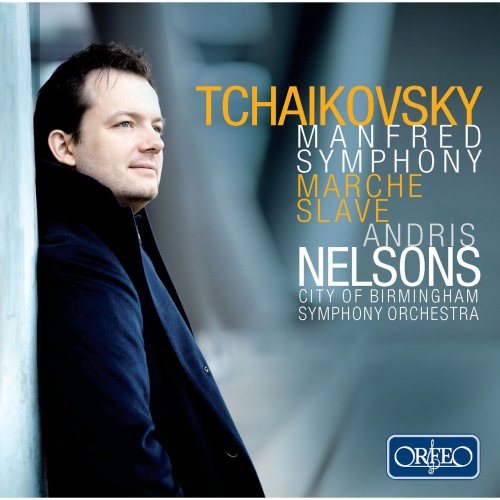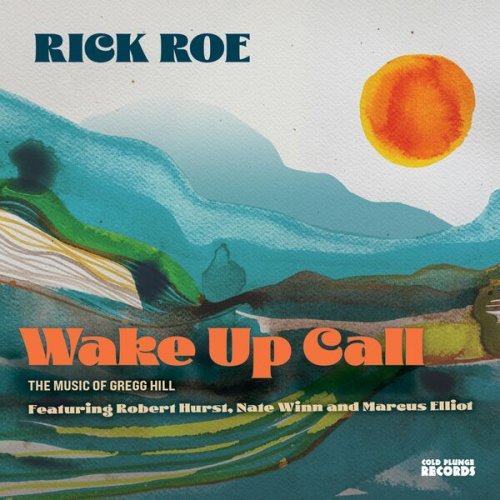Andris Nelsons, City of Birmingham Symphony Orchestra - Tchaikovsky: Manfred Symphony, Marche slave (Live) (2015)

Artist: Andris Nelsons, City of Birmingham Symphony Orchestra
Title: Tchaikovsky: Manfred Symphony, Marche slave (Live)
Year Of Release: 2015
Label: Orfeo
Genre: Classical
Quality: FLAC (tracks)
Total Time: 01:07:29
Total Size: 357 Mb
WebSite: Album Preview
Tracklist: Title: Tchaikovsky: Manfred Symphony, Marche slave (Live)
Year Of Release: 2015
Label: Orfeo
Genre: Classical
Quality: FLAC (tracks)
Total Time: 01:07:29
Total Size: 357 Mb
WebSite: Album Preview
Marche slave, Op. 31, TH 35 (Pyotr Illitch Tchaïkovski)
1. Marche slave, Op. 31, TH 35 09:30
Manfred Symphony in B Minor, Op. 58, TH 28 (Pyotr Illitch Tchaïkovski)
2. I. Lento lugubre - Moderato con moto 17:00
3. II. Vivace con spirito 10:21
4. III. Andante con moto 10:30
5. IV. Allegro con fuoco 20:08
Performers:
City of Birmingham Symphony Orchestra
Andris Nelsons, conductor
Tchaikovsky's Manfred Symphony, a programmatic work based on Lord Byron's Manfred via the Russian critic Vladimir Stasov, has been performed less often even than the three earlier Tchaikovsky symphonies, to say nothing of the mighty final three (although most of the major Russian conductors have recorded it at some point during their careers). It was composed in 1885, at the height of the composer's career. Tchaikovsky was ambivalent about the work, at first proclaiming it one of his best, but later threatening to destroy it. The symphony shows the influence of Berlioz's program works (including an "idée fixe"), and is not boring in the least. The reasons for its neglect include its length, its orchestral complexity (it calls for two harps, not something all orchestras can provide, as well as a harmonium or organ and gigantic brass and wind sections), and a certain lack of cohesion. Russian conductors may bull through the work and thus avoid the latter issue, but Latvian conductor Andris Nelsons, leading the City of Birmingham Symphony Orchestra in a live recording, tries for a more measured approach. Listeners may wish for more blood and guts as the finale proceeds, but there are many attractions: the Birmingham players punch above their weight in a perilously difficult score (apparently, it's true, having four spliced-together chances), and Nelsons gives the work a level of detail and balance that's especially impressive in a live performance. The Marche Slave, Op. 31, serves as a curtain raiser, and Nelsons' energetic reading works very well: annotator Tobias Hell points out its thematic similarities (the Marche Slave was about the Serbian struggle against the Turks, Manfred about the Greek independence war). If this is not the last word on the Manfred Symphony, it is one that will be welcomed into many collections.


![Keith Jarrett - Solo-Concerts Bremen / Lausanne (1073/2025) [Hi-Res] Keith Jarrett - Solo-Concerts Bremen / Lausanne (1073/2025) [Hi-Res]](https://www.dibpic.com/uploads/posts/2025-12/1766498595_b7uxg60700zwc_600.jpg)
![Jamaican Jazz Orchestra - Rain Walk (2019) [Hi-Res] Jamaican Jazz Orchestra - Rain Walk (2019) [Hi-Res]](https://img.israbox.com/img/2025-12/21/snzv0mdiaf2dg21tiqrm87jaq.jpg)




![Black Flower - Ghost Radio (2016) [Hi-Res] Black Flower - Ghost Radio (2016) [Hi-Res]](https://img.israbox.com/img/2025-12/21/9jx4xnhjd3hra5u06rbmghsre.jpg)